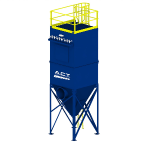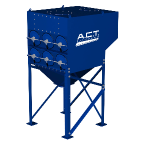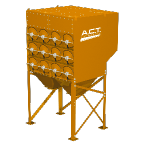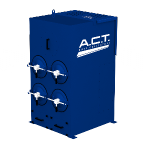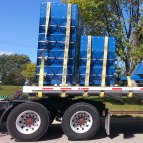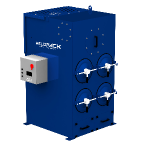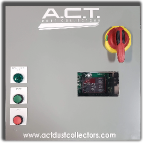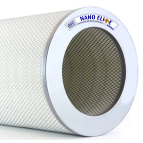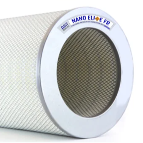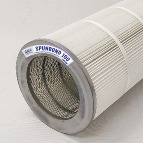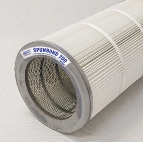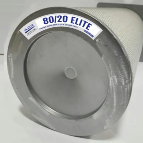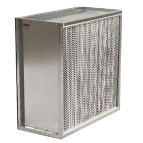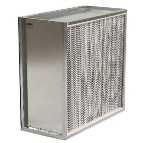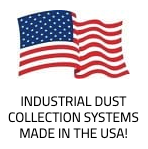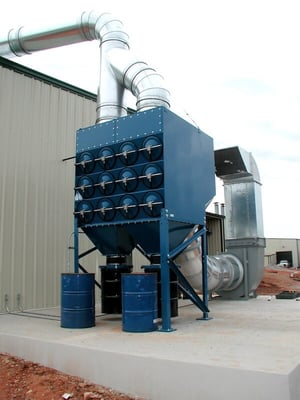 Air quality control goes beyond just having a clean workspace. Industrial dust collectors not only clear the air, but they also:
Air quality control goes beyond just having a clean workspace. Industrial dust collectors not only clear the air, but they also:
- Improve health and safety
- Increase productivity
- Lead to better product quality
- Help you meet compliance regulations
- Help to ensure happier employees
This means keeping your facility dust-free can be good for your employees and your bottom line.
When selecting a dust collector, price is often top of mind. An economical way to improve the overall air quality in your facility is with an ambient dust collector.
What Is Ambient Air?
Ambient air is defined as atmospheric air in its natural state. Many manufacturing facilities have stagnant air, which can hold small dust and fume particles. This air can be hazardous for humans to breathe. It can also get caught in the filters of the HVAC systems, causing increased costs for heating and cooling.
Additionally, this dust and particulate can settle in other equipment and cause expensive maintenance issues. It’s important that the dust is properly collected and filtered.
When compared to other exhausting methods, ambient dust collectors that remove dirty air from your facility, filter it and return it to the facility can save you thousands of dollars each year on heating and cooling costs.
How to Filter Ambient Air
Ambient dust collectors work by first drawing air pollutants into the intakes. From there the dirty air is taken into the dust collector and through the filters. The filtered, clean air is then returned to the shop and often used to direct or “push” more dirty air to the ductwork intakes.
It can be difficult to collect fume and dust particles from ambient air. Unlike source-capture applications, where the air is confined to a small area and dust and fume collection is primarily done with collection hoods or fume arms, ambient air applications require a dust collection system that can clean the air in a vast area.
To filter the ambient air properly, the air volume needed is calculated based on the volume of the area to be cleaned. The air volume calculations are then used to determine the size of the system needed. With an industrial dust collector in place, you will see a positive difference in productivity, better product quality and happier employees.
Though it can be a case-by-case situation, it’s typically recommended to use a cartridge dust collector for ambient air filtration because they use densely pleated filters with a high surface area. This means that they can handle a lot of airflow.
Welding Fume Extraction
Extraction at source is the most effective and efficient solution for capturing welding and cutting fumes. At-source welding fume extraction minimizes the risk of the welder or operator being subject to hazardous fumes.
Welders especially need to be protected from hexavalent chromium. Hexavalent chromium is a form of chromium and, if breathed at high levels, can lead to health problems.
A.C.T. Dust Collectors offers fume arms that are perfect for medium- to heavy-duty welding fume and welding dust and smoke applications. Fume arms allow you to capture and extract containment fumes at the source. A.C.T. Dust Collectors’ self-supporting fume extraction arms are fabricated of steel with external joints that are fully adjustable to the workers’ desired tension.
Applications
Operations creating weld smoke and fumes use ambient dust collectors to improve air quality. Capturing weld smoke and fumes from a metal fabrication facility can be a challenge, but having a fume and dust collector in place will help filter ambient air and keep your employees safe and the company in compliance with regulations.
Need a Dust Collector for Ambient Air?
A.C.T. Dust Collectors has extensive experience and knowledge to help choose the best unit for your application, whether it’s your first dust collector or an upgrade to a current system.






























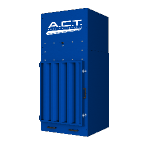
%20Collectors%20Image.png?width=143&height=143&name=ADC%20(Ambient)%20Collectors%20Image.png)
